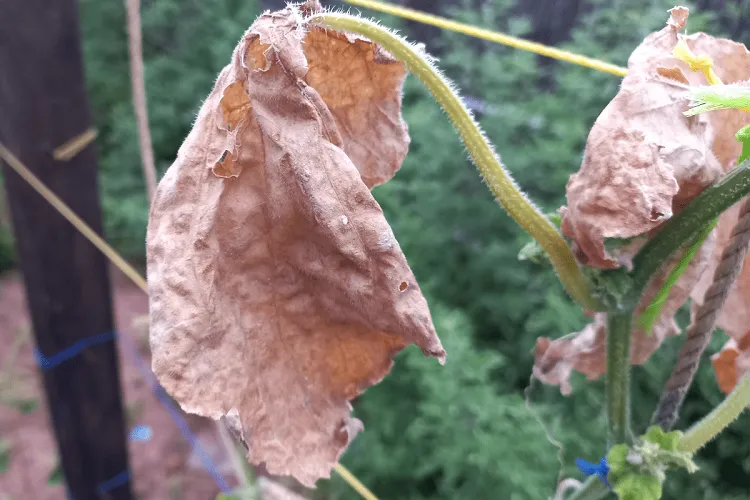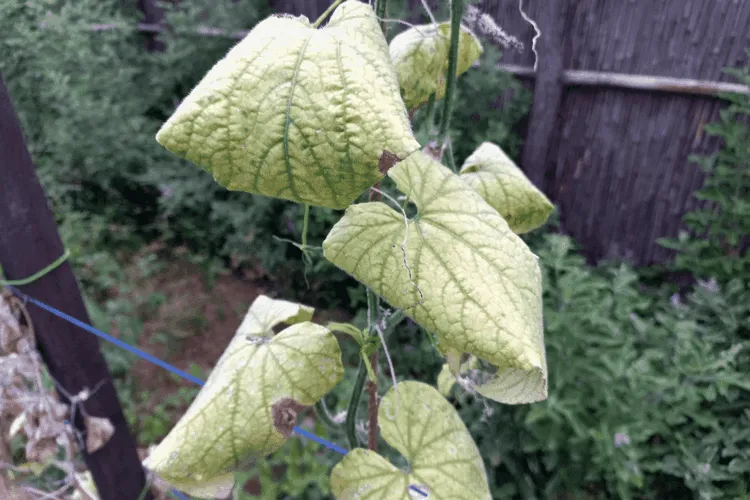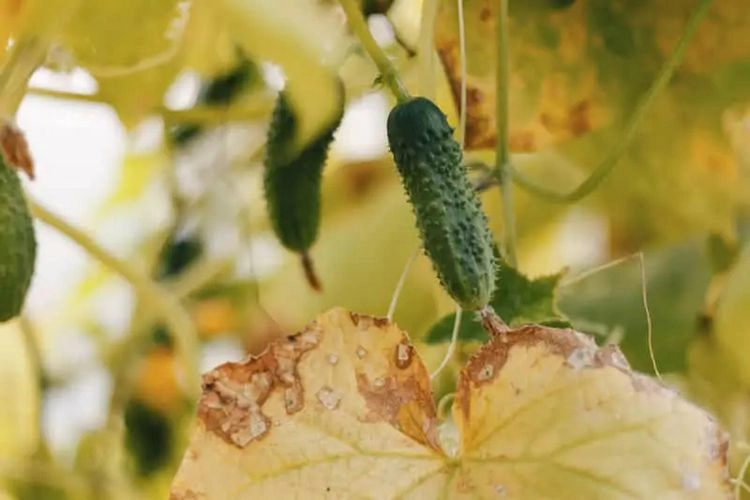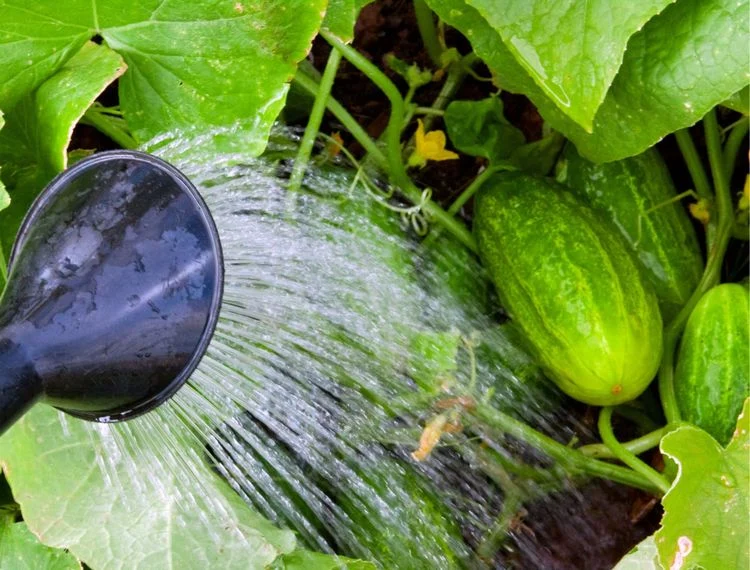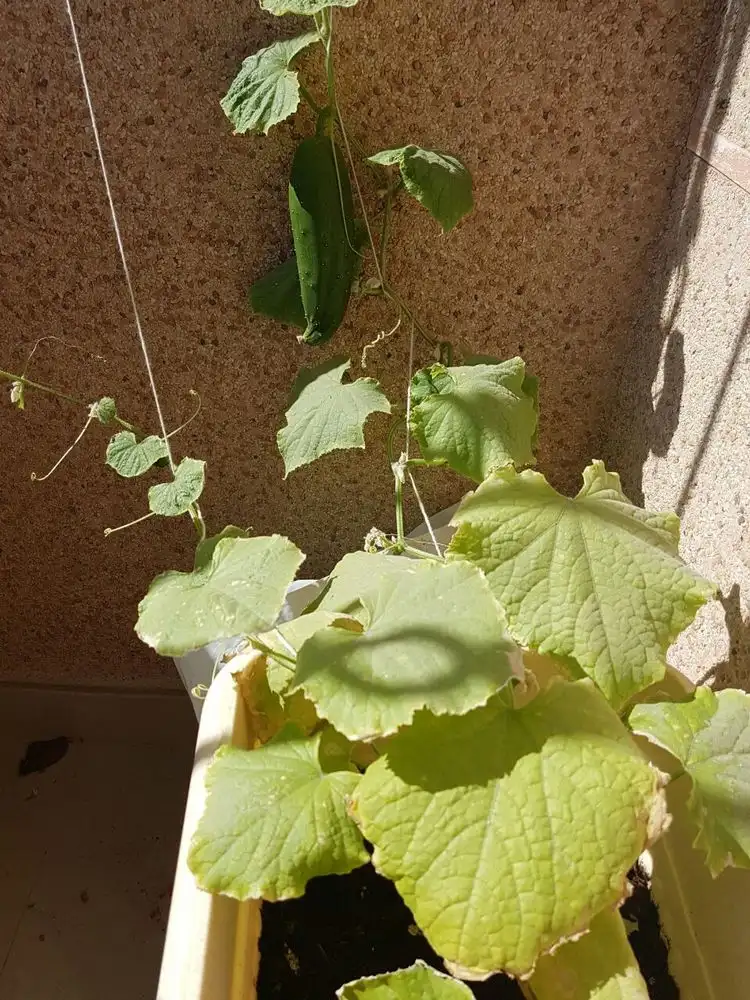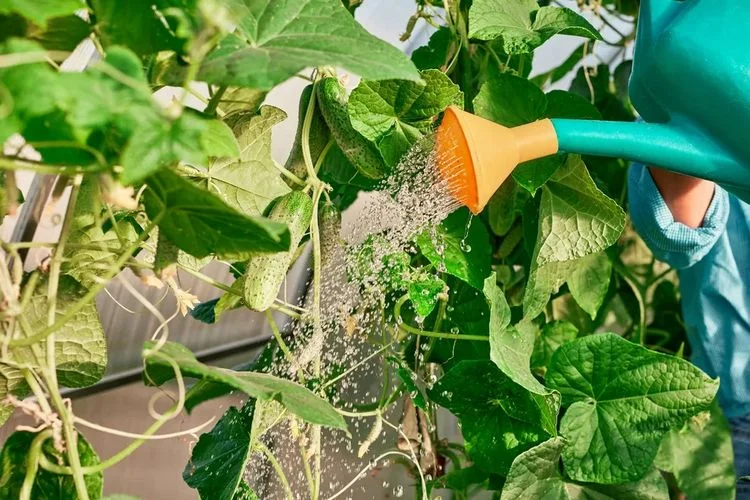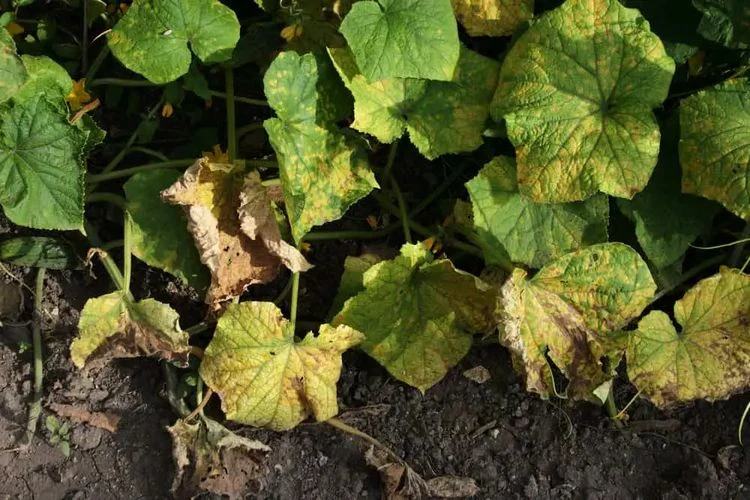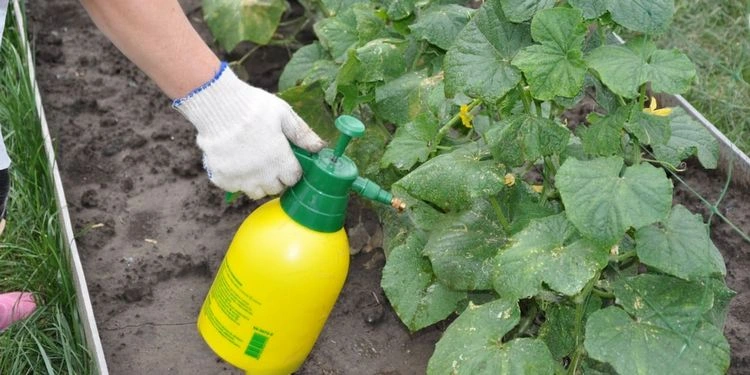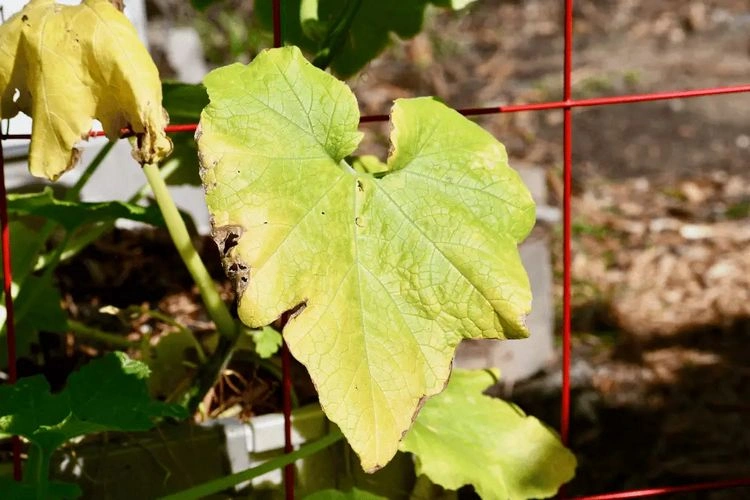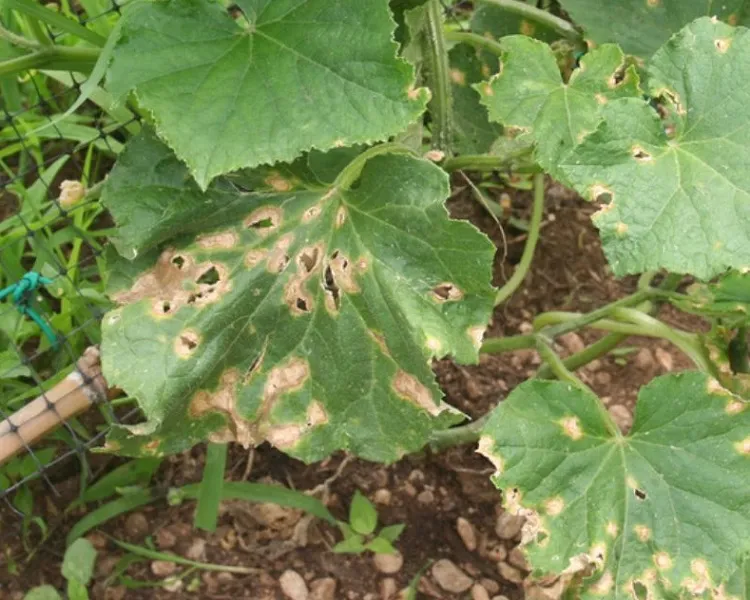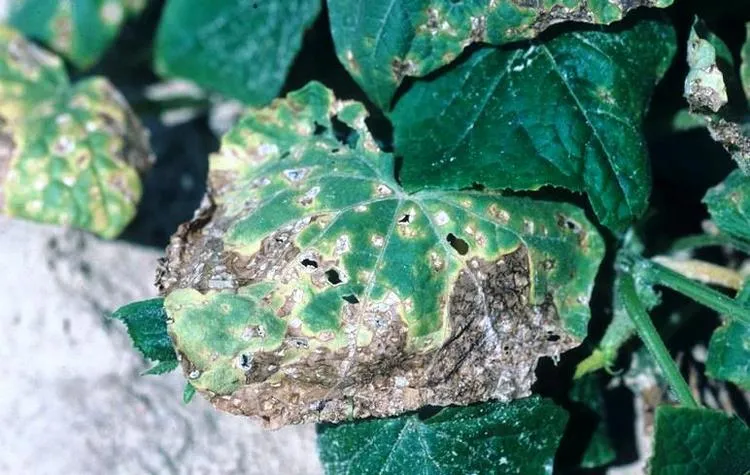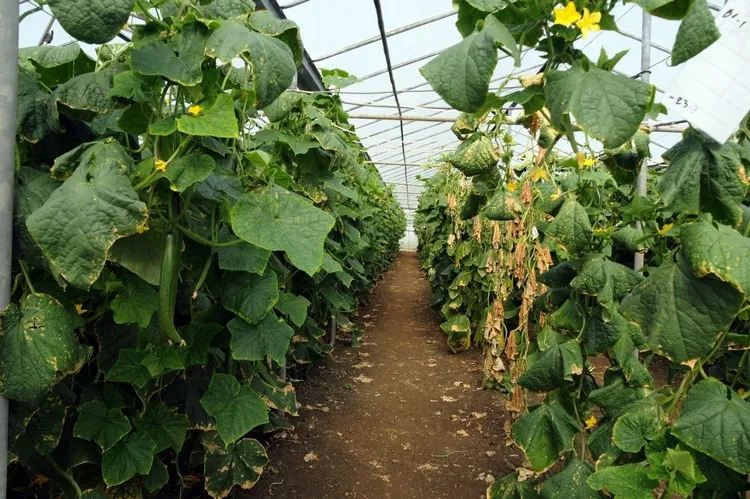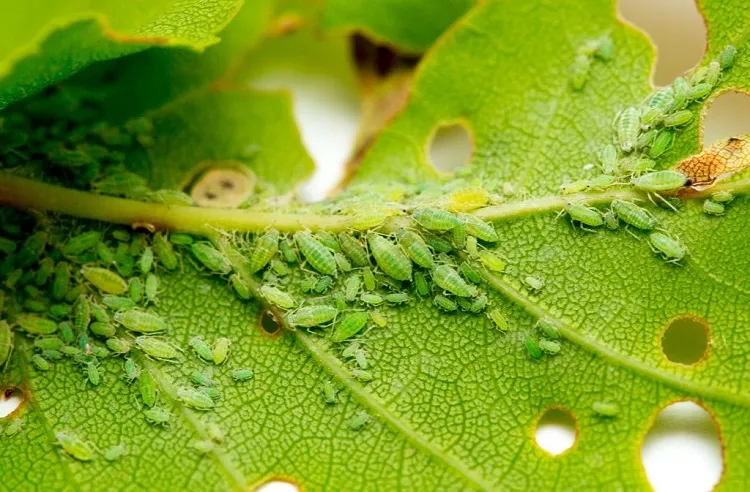Why cucumber leaves are drying up? You’ve probably done your best to give your cucumber plants just the right amount of water. But are you still at a loss why the leaves on your cucumber plants are wilting and dying? It’s not just about proper watering.
Harvesting ripe cucumbers is incomparable. When you see the cucumber plant you’ve been tending for months go droopy and eventually die, your joy of gardening quickly turns to sadness. It’s sad to see your cucumber plant wilt, dry up and die. The key to saving your struggling cucumber plant is to find the reason for its distress. Below you will find the most common reasons (+ damage pictures) for dried leaves and we will also tell you a few solutions!
Can a Cucumber Plant Survive if It Loses All of Its Leaves?
Cucumber leaves are essential for the survival of the plant. Photosynthesis, which is essential for the plant’s survival, takes place mainly in the leaves. The leaves protect the fruit from the heat and prevent weeds from conquering the plant’s territory.
Cucumber Leaves Are Drying Up Because of Improper Watering
To stay alive and thrive, cucumber leaves need a constant supply of moisture. In hot, dry weather, they are more prone to drying out.
Prevent Water Shortage
If your plant’s leaf tips start drying up and stay that way, this is usually due to lack of water and can be remedied by watering the plant well.
The leaves of cucumber plant can be damaged by the high temperatures and dry air: fortunately, burnt leaves can be revived if they are not severely damaged. The leaves can be saved by watering, spraying with water or even by immersion in water. In the heat of summer, cucumbers are more prone to drying out, so it’s important to keep them as moist as possible.
If your cucumber leaves are drying up, your plants may be thirsty. See if the soil has dried out by sticking a finger in the soil. When the top 2-3 inches of soil are dry, you need to water your plants quickly.
Knowing how much water your cucumber plants need can help keep them from dying. When calculating the water needs of your plants, you should take into account the rainfall that has already fallen.
Cucumbers Are Overwatered
Cucumbers are overwatered when they show the following symptoms:
- Yellow and brown discolored leaves
- Ruined roots
- Roughed up soil
- Often wilted looking leaves, but sometimes dry leaves as well.
Pay attention to how much water you give your cucumber plants so they don’t drown. Check the whole cucumber plant if you notice any discoloration on the leaves. There should be no puddles or pools of water at the base. Stop watering if there is too much water and make sure there are adequate drainage holes.
How Often to Water Cucumbers?
Cucumbers are not plants that require daily watering. They should normally be watered thoroughly two to four times a week. In summer, as mentioned above, you should test the soil with a finger and if it is too dry, you should water.
Also read: How to Fertilize with Milk
Consider Heat and Sunlight
Cucumber plants, whether grown indoors or outdoors, need at least 70F/21C degrees and at least 5 hours of sunlight per day (more is better), but if the foliage in the greenhouse turns brown, sunburn may be to blame. If this is the case, shade your greenhouse (with blinds, fabric or cardboard) during the warmest part of the day.
Curled cucumber leaves are a common symptom of too much direct sunlight. While a lot of sun can kill cucumber plants, it is necessary for their growth. When temperatures rise past a certain point, plants may begin wilting, lose leaves, get burned, and even die. To avoid excessive heat stress in cucumbers, you can cool the soil with mulch or provide shade.
Brown and Yellow Spots on Cucumber Leaves Because of Fertilizer
If you use too much fertilizer, your plants may dry out and develop dark spots on the leaves. Using slow release fertilizer or compost can reduce the risk of overfeeding. Cucumber plants showing signs of “fertilizer burn” should be watered continuously for several days to wash out the excess fertilizer. This should not involve overwatering the soil, so proceed with caution.
Also read: Fertilizing with Epsom Salt: How Is the Home Remedy Used Properly
Cucumber Leaves Are Drying Up – Planting Location Is Very Important
The leaves on your cucumber plants may turn brown if they are overcrowded. This happens when the root system is too congested to effectively draw water from the surrounding soil. If this is the case, consider repotting your cucumbers to give them more room for root growth and water absorption.
Cucumber Plants – Identify and Combat Common Diseases and Pests
These diseases and pests are possible can causes wilting of plant leaves.
Cucumber Leaves Are Drying Up Because of Anthracnose
Anthracnose is a fungal disease that initially leaves brown spots and yellow edges before eventually darkening the entire leaf. In advanced stages, they spread and cause the cucumber plant to dry out. All infected plant parts must be cut off and disposed of in the trash (not on the compost heap as there is a risk of spreading the disease).
Overflowing water, insects, and dirty gardening tools can all contribute to the spread of the fungus, so it’s important to take preventive measures to limit the potential impact of the disease. Garden tools must be disinfected before use. You should move the diseased plant to a cooler location, preferably below 70F/21C degrees, to stop its growth.
Also read: What Eats Cucumber Leaves? How to Get Rid of This Pest?
Identify Leaf Spot Disease
Angular leaf spot disease initially appears as watery, angular spots on the leaves. As the disease progresses, the cucumber leaves become dry and brown. It is possible for slime to form on the leaves and fruits of the plant.
When angular leaf spot strikes, the only option is to remove the plant from the garden entirely. Affected cucumber plants should never be composted, but disposed of with household waste. It is recommended to wait at least three years before planting cucumbers in this location again. Cleaning gardening tools and other items that have been in contact with infected plants is essential.
Fusarium Wilt Causes Dry Leaves
Fusarium wilt is devastating to cucumber plants. Often the flower wilts first, then the leaves turn brown and dry up. The cucumber plant suffers significant growth disturbances. The stem rots at the base. A network of pink fungi is possible. Wilt eventually reaches the fruit, making it appear brownish-black. They also wither as the disease progresses.
Affected plants should be disposed of as waste. There is currently no potential treatment option.
Aphids Infestation
The cucumber aphid is the most destructive insect that leads to the complete death of plants if treated too late. An infestation with aphids leads to the death of the buds and tips of the shoots, so that the buds no longer grow flowers. The leaves become mottled black and wilt. To prevent further pest infestation, cucumber plants that are already infested should first be removed. You can find neem oil at any garden center, which effectively controls the cucumber aphid without harming the environment. This acts like a rubber band on the respiratory system. The parasites suffocate and slide off the plant.
Natural predators are the most effective form of pest control. Some insects, like ladybugs and lacewings, specialize in eating aphids and can destroy hundreds of them in a single day.

